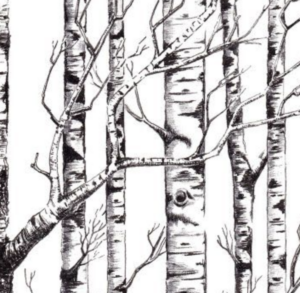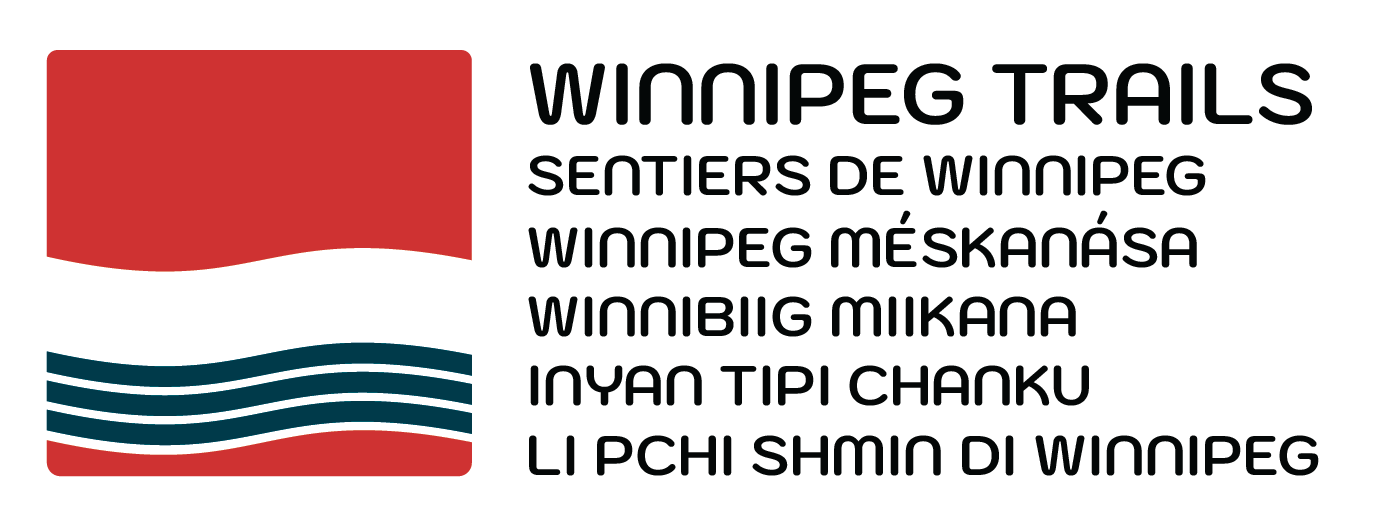
We hope you had a great time at Table for 1200 this year. Thank you for accepting out gift of wiigwaasaatig (paper birch).
This information is intended to give you the information and inspiration you need to be able to do your best to plant it in a good way.
Paper birch is native to Manitoba. It can tolerate a variety of soil types. This can come in handy in an urban environment! Luckily most of the trees from here are tough and resilient, and don’t need much more than being put in the ground and left to themselves so that can grow thrive to be happy.
FutureForests is a project of Winnipeg Trails whose goal is to bring rapid forestation, treeplanter-style, to the city. ..and now you are part of it, even if you plant only one. Trees provide too many benefits to count, and are one of the best ways to improve community and make a difference. In the spring and fall, our staff and volunteers plant thousands of baby trees along trails. Some live, some don’t, but it increases our ability to rapidly get large swaths of trees going – future forests. In the fall of 2022, our small crew planted 58000 in just a few weeks aling the Duff Roblin Floodway! All we ask is that you plant one.
Do you know the word for tree?
“Atig” is simply tree to an Ojibwe speaker. What English speakers call “paper birch” or “white birch” is “wiigwaasaatig”. Or wiigwaas tree. Sound familier. It should. It is far and away one of the most important trees for Indigenous people wherever it grows, and for no one is it more important than the Anishinaabeg people of the Ojibwe Empire. Useful for warmth and fire, transportation, and art, birch has many uses. The word for birch in Ojibwe/Anishinaabemowin – Wiiwaasaatig – contains a clue to its primary use: housing. Its outer bark is highly resistant to rot, full of oil, and outlasts the wood itself by many years. It can be peeled like a tarp and used to clad houses. The commonly known English word “wigwam” comes from the word “wiigiwaam” and it is closely related to the tree. Embedded in the name of the tree itself is a linkage to why it is so important. For this and so many other reasons, we believe it is important for us to learn the words for things around us in Indigenous languages (if you don’t already).
When to plant your tree:
Your tree is ready to grow now. Don;t be too picky about a site. Let your feeling guide you. If you still aren’t sure where to plant, you can put it in a pot for a while, (but then you will be responsible for its water, and you will likely want to plant it in the late fall after its leaves have fallen so it can comfortably overwinter.
Just before rain is a great time to plant. Planting while its raining is even better (and makes you feel alive!).
Where to plant your tree:
Look for somewhere that could use a tree that the public can
enjoy. On open space a few steps from any other tree near the sidewalk or a trail near you is ideal. You can plant right in the grass!
If you need a few days to decide where to plant it, put it in the fridge over night, and leave in a shady place for the day.
How to plant your tree:
Trees like to have their bark in the open air, and their roots in the ground. Be sure to plant your tree so that the base is at the same level of the soil (top of the soil plug”. Open up the ground with a small shovel or trowel (with a stick or anything you have lyring around will do for just one.)
How to care for your tree:
Good news. Your tree doesn’t need much. A little patch of soil. A little headstart over the competition, and sun and water is all it needs.
The biggest threat to a growing a tree to maturity in an urban area is usually a human with a lawnmower. So we recommend placing a stake or big stick next to your tree so it can be seen. If it lives for a couple years, it has a good chance of success. Paint the tip, of your stake if you want to be extra cautious.
Water isn’t necessary unless circumstances are extreme. Even then, in very hot weather, while a little douse or too will be appreciated, you might be surprised at how much neglect a local tree can handle.
Mulching is always good though. Mulching is easy. As soon as you plant your tree, collect some dried grasses or leaves and make a little nest around the base. Adding a little mulch each year after it gets compacted by the snow will be appreciated. ThT will be similar to what happens in the forest, helps keep grasses away, helps keep the soil directly beneath the tree shaded and moist, and greatly cuts down on its need for water.
THANKYOU for being a part of FutureForests and the work we do at Winnipeg Trails. We welcome you to learn about PlainBicycle, WinterPeg, HealinTrails and may more meaningful initatives, and contact us if you’d like to get involved.
